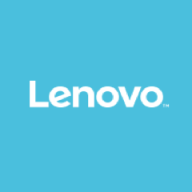

Red Hat Hyperconverged Infrastructure and Lenovo ThinkAgile VX Series are competing products in the hyperconverged infrastructure market. Lenovo ThinkAgile VX Series appears to have an advantage due to its robust features and perceived value for cost, even though Red Hat Hyperconverged Infrastructure is favored for its pricing and support.
Features: Red Hat Hyperconverged Infrastructure is praised for its open-source integration and flexibility, providing a cost-effective solution. Lenovo ThinkAgile VX Series stands out with its comprehensive integration capabilities and advanced management tools. The main differentiation lies in Lenovo's superior performance and scalability features.
Ease of Deployment and Customer Service: Lenovo ThinkAgile VX Series offers a streamlined deployment process and strong customer support, facilitating quicker implementation. Red Hat Hyperconverged Infrastructure, while flexible, may require more time for deployment due to its customizable nature, with customer service being more favorable for troubleshooting post-installation. Lenovo's structured model is seen as advantageous for rapid deployment.
Pricing and ROI: Red Hat Hyperconverged Infrastructure provides a competitive setup cost, appealing to budget-conscious buyers seeking open-source solutions with favorable ROI. Lenovo ThinkAgile VX Series, while more expensive, delivers a higher ROI through its robust performance and scalability, making it attractive to organizations willing to invest for enhanced capabilities and long-term returns. The difference lies in Red Hat's cost-effectiveness versus Lenovo's potential for greater financial return.

Differentiating yourself from the competition is vital in today’s fast-moving business environment. To support your business, IT systems must be simple, agile, and cost-effective so you can meet your customers’ requirements to be ever online. Lenovo ThinkAgile VX Series enables you to meet these requirements by focusing on the business outcome you require, rather than on building your infrastructure.
ThinkAgile VX Series, powered by VMware vSAN, is available in several models. Each is preconfigured, pretested, and optimized to provide the simplest way to bring a new VMware hyperconverged environment online. If you have an existing VMware environment, the VX Series can integrate into it easily.
Designed for any size business from SMBs through large enterprises, VX Series can be used as infrastructure for remote office/branch office (ROBO) and retail stores as well as virtual desktop infrastructure (VDI) and enterprise applications.
Red Hat Hyperconverged Infrastructure - based on our leading OpenStack and virtualization platforms - provides co-located, scalable, software-defined compute and storage, driven by Red Hat Ansible Automation on economical, industry-standard hardware.
We monitor all HCI reviews to prevent fraudulent reviews and keep review quality high. We do not post reviews by company employees or direct competitors. We validate each review for authenticity via cross-reference with LinkedIn, and personal follow-up with the reviewer when necessary.